By Paul Byrnes
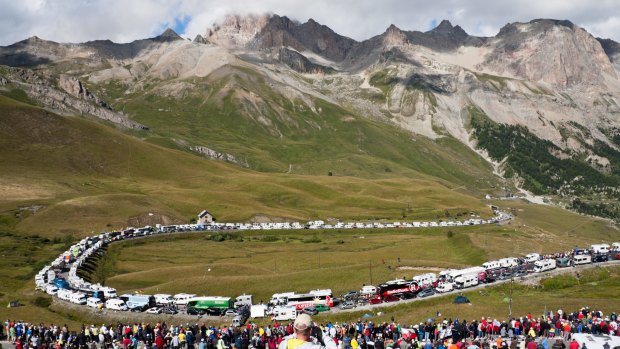
Spectators, cyclists, campervans and team buses line the roads at the bottom of the Col du Galibier.Credit: iStock
It's ridiculously easy to see the Tour de France in person. Just go to France and take a train to somewhere in the south, preferably near a mountain. Find a comfortable spot by a road, with a cafe and conveniences nearby, and wait. Eventually the tour will come to you, although it might take several decades.
Actually, not even that would work. In this year's Tour, which begins in Dusseldorf on July 1, the route passes through 10 French towns not visited in its 113-year history. This seems astonishing, but France is the biggest country in Europe with more than 36,000 communes, each of which has at least one town, so you can do the sums.
There are 21 stages this year, covering a total distance of 3521 kilometres, and the riders are rarely alone. That makes watching the tour in situ quite a challenge. Hundreds of thousands do it every year, proving it can be done, but how? Aren't the roads all closed hours, if not days, before the racers come through? How do you get a hotel room? And how do those freaks in mankinis and chicken suits get into position on the Col de Tourmalet, half way up the Pyrenees? No need to ask why they do it, since most of them look at the TV cameras rather than the riders. Andy Warhol was right about everyone having 15 minutes of fame, but wrong about the duration. These guys settle for seconds of infamy.
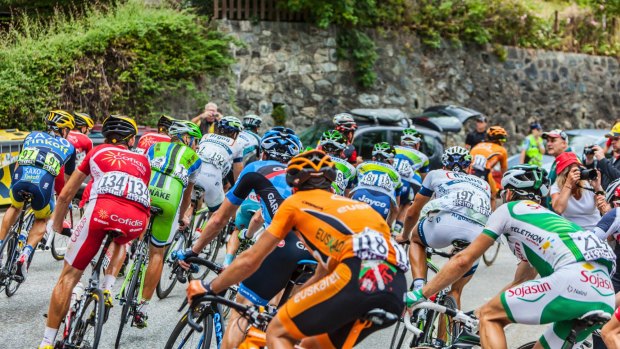
The peloton climbing the road to Alpe-D'Huez. Credit: iStock
The Tour may be the most challenging sporting event on the planet, but it doesn't always bring out the best in people. Tour history is so full of bad behaviour by the contestants that the event can rightly claim to represent the great dramatic poles – good versus evil, heaven versus hell.
In 1904, the second Tour, 200 supporters of local Loire hero Antoine Faure ambushed the other riders on top of the Col de la Republique, near St Etienne. A fight broke out, a couple of riders were injured and one knocked out of the race. The melee only stopped when race officials fired a gun in the air. The organisers paid the unruly locals back: the race did not come near that department again until 1950.
In that infamous second Tour, 10 riders, including the top four finishers, were disqualified for rule violations – including riding on trains and in cars. There were violent clashes between riders and fans in three separate areas of the race – which puts a mankini-wearer in the proper context. The lawlessness of Lance Armstrong and the other dopers who have been rubbed out in the last two decades isn't quite as unusual as you might think: Maurice Garin, who won the first race in 1903, smashed up Fernand Augereau's bike during the final stage when Augereau refused to let Garin have the stage win unchallenged – even though he was three hours ahead. Garin then paid him to keep quiet.
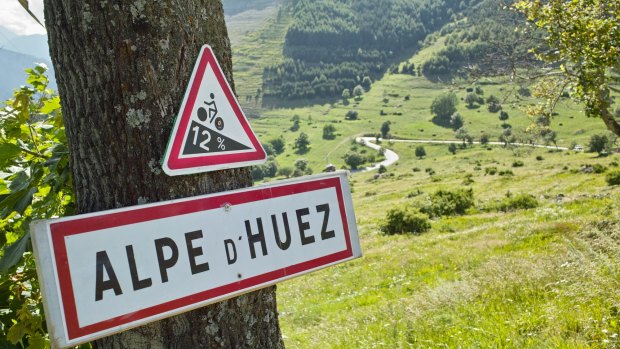
Alpe D' Huez, Hautes Alpes France.Credit: iStock
That's part of Le Tour's charm: it's a little bit Wild West and always has been. Unlike the Olympics, Le Tour reflects the mechanical age and the rise of the working class hero. It's arguably the most democratic of the world's great sporting contests – for the public, no ticket required. When Germany defeated France in the war of 1870, the military and political establishment in France decided that French youth had lost its vigour. Dr Philippe Tissie, a great advocate for sport, blamed psychological traumas experienced by French mothers, going back as far as the Revolution. "The generations from around 1870 to 1875 were born tired," he wrote. Physical education could fix their weakness, cure their alcoholism, reverse their moral decadence. French cycling clubs grew out of this desire to "man up" and be ready for the next war.
As a television spectacle, it's become far more than a bike race. Millions watch it for the scenery, with no idea of the rules. You can plan a holiday around the helicopter shots of French "Bastide" towns, ornate chateaux and outstanding natural wonders. For Australians, huddled in front of the fire at 2am in the dead of winter, it provides a respite: O, to be in France now the sunflowers are in bloom!
We came late to the party. When Phil Anderson became the first Australian rider to win a stage in 1981, the event was barely visible on Australian TV screens. The breakthrough was when SBS began to cover the race – first with highlights in 1991, then with daily coverage of all stages from 2005.
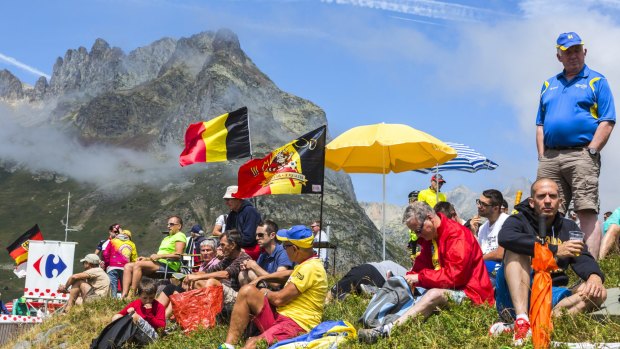
Cycling is a genuine spectator sport.Credit: iStock
Anderson says he hardly saw an Australian fan in the first of his 13 consecutive tours. That changed with the TV coverage. He estimates that perhaps 10,000 or more Australians now visit the event each year – either on a specialised tour or under their own steam. Anderson has conducted an annual riding tour for a number of years but he is winding down that side of his business – at least for Le Tour. He will concentrate on bespoke tours for clubs and small groups, partly because the competition from big tour operators in the UK is intense. "Some of them bring 20 or 30 coach loads of people," says Anderson. '"he whole market has changed. Now with the internet, so many people are just doing it themselves. The possibilities for small operators have diminished."
There's no question that it's easier to go with an organised tour. A small number of Australian companies offer high-quality packages that cater for both riders and non-riders, some with celebrity guides attached – such as Stuart O'Grady. There is a distinct hierarchy: the tour recognises only one company as the official tour operator, so they get special access to the inner sanctums, at starts and finishes. All of the companies offer good hotels, fine food and wine and sightseeing.
Not everyone can spare $5000 for such a tour, so how does the budget traveller get to see it? Read on for my guerrilla guide to crashing Le Tour.
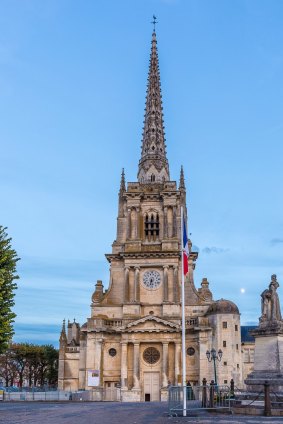
Vendee Cathedral. Credit: iStock
The answer is yes, you can, but you have to get up early and be wily.
FIRST, LEARN SOME FRENCH
It will help. A lot of the information you want is only available en francais – such as where the road closures are going to be. Google Translate comes in handy. So does this website (tourisme.fr), which connects you to every Tourist Office in France – where someone usually does speak anglais.
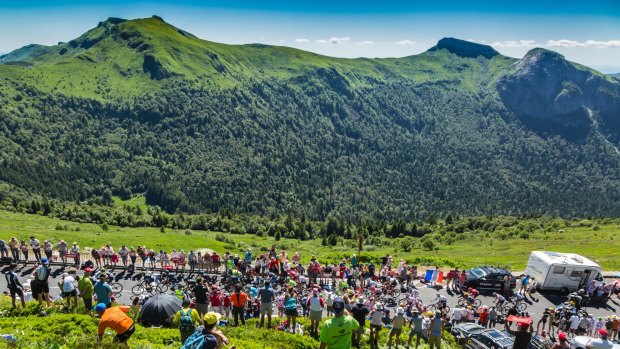
The peloton riding on the road to Pas de Pyerol, Cantal in the Central Massif.Credit: iStock
DO THE LEGWORK
Second, start preparing now if you want to do this in 2018. Getting the most from the tour by yourself requires legwork and cunning. You have to know when to get up at 3am and when to drive on until midnight to get ahead. You'll have to think like noted cycling photographer Graham Watson, who covered the tour for 38 years, before his recent retirement to New Zealand.
He wrote the book on how to see the tour (Graham Watson's Tour de France Travel Guide). His advice is to ease yourself in. "If you have never seen the Tour before, or never travelled around France, you are pushing your luck going straight into the mountains. The flat roads are easier to negotiate and get around on than the mountain roads."
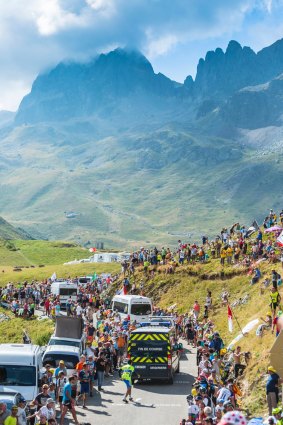
Specific vehicles which end each stage during Tour de France, driving on the road to Col du Glandon in Alps.Credit: iStock
You could use the excellent French trains (they don't usually strike in July), but a car is better, provided you keep ahead of the race. Following it is a nightmare of traffic jams. A car with bicycle (easily rented) is the best combination. Pick a reasonable size town like Lourdes or Pau (for the Pyrenees) in which to base yourself for three or four days, so you can travel out to see stages without having to move hotel every day. Buy the local newspaper or get the road closures from the tourist office. Some people get up very early, drive to the base of the mountains, park and then ride up to a vantage point and wait. Most of the people we see lining the mountain stages have been there at least overnight; the camper vans get in days ahead, then move on two or three stages ahead and park again to wait.
Finding accommodation is the hard part. The tour organisers announce the start two years ahead, so we already know next year's tour begins in the Vendee. In October, they will announce bare details of the rest of the route, so that is when you need to act. Professionals like the former Herald cycling journalist Rupert Guinness make educated guesses about where the tour is likely to go. The teams have early information, but they don't make that public. Luckily, there are websites that get leaks, one of which is already predicting the tour will go to Brittany after the Vendee, and do the Alps before the Pyrenees. Watson thinks that could mean more stages in the Alps, fewer in the Pyrenees. That would make Lourdes the best guess for a base in the Pyrenees because it is the only place with enough hotels, he says.
LOOK FOR CLUES
One sneaky way to test where the route is going is to look at the most popular hotel booking sites and see which towns are already heavily booked. No-fee cancellation means you can book on spec. The official guide with detailed maps comes out around the world in late May. If you're still looking for a hotel then, you're late, but there is a trick. Watson says the teams always overbook rooms in October, then release what they don't need in May – meaning you might get lucky.
TAKE SIDES
Of course, you might just want to see the riders start on one day, as I did two years ago in Carcassonne. Taking the train to the city of choice makes sense, as long as you can walk to the departure, but here's another tip. Pick the right side of the road from which to watch, based on what you want to do after the riders go by. The whoosh lasts about 90 seconds, followed by more than an hour of official vehicles, buses and support trucks, during which the police will not let you cross the road. And finally there is one other way to see the race close up – but it requires years and years of training and an iron backside.
TOP FIVE SPORTING EVENTS OF FRANCE
THE FRENCH OPEN
The top clay court tennis championship in the world, and the second of the four tournaments in the Grand Slam. Held over two weeks from late May at the Stade Roland-Garros in Paris. Said to be the most physically demanding tournament because of the demands of seven rounds on clay.
THE 24 HOURS OF LE MANS
On June 17 and 18 this year, the town of Le Mans in the Loire Valley becomes petrol head capital of the world for the world's oldest sports car endurance race. Apart from the deafening noise, there's an all-night fair that's a lot of fun. The 60 cars must complete the 24 hours without major mechanical issues.
FESTIVAL OF ST LOUIS, SETE
The most French of all sporting events, with a 275-year history, takes place in Sete, on the western Mediterranean coast in Languedoc, in August. Big burly fishermen compete for seven days to become the top jousting boat of France. Yes, they row boats at each other along the town's royal canal, and a man in the front of each boat attempts to bash his opponent into the water with a big stick. A fabulous if eccentric spectacle.
VENDEE GLOBE
The tour de France for yachts, or the toughest yacht race of them all. Contestants must sail around-the-world solo, non-stop and unassisted. It starts in Les Sables-d'Olonne, in the Vendee department of western France and runs every four years, via the Cape of Good Hope, Cape Leeuwin off WA and the Horn.
GRANDE ODYSSEE SAVOIE MONT-BLANC
The tour de France for dogs. For 11 days in January, passing through 22 mountain resorts, the world's top 25 dog teams and their mushers tear through 750 kilometres of ice and snow in one of the world's toughest canine sled events. Attracts about 100,000 spectators each year, and 300 dogs.
TRIP NOTES
MORE
ROUTE
See velopeloton.com/2018-tour-de-france-route/
Paul Byrnes is an Australian writer who divides his time between Australia and France.
Sign up for the Traveller Deals newsletter
Get exclusive travel deals delivered straight to your inbox. Sign up now.